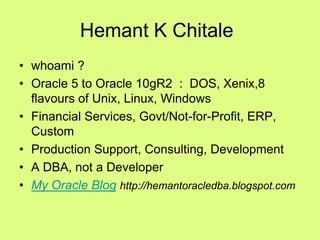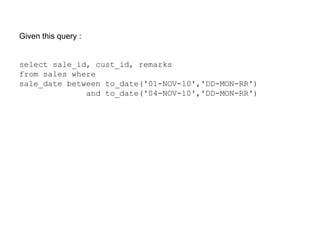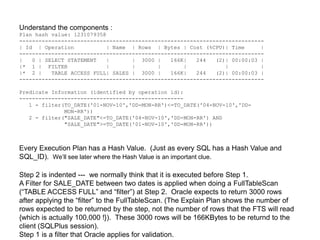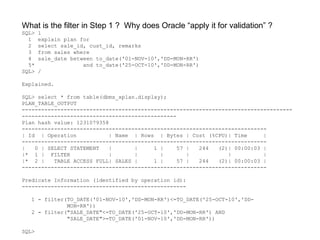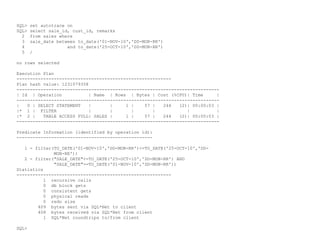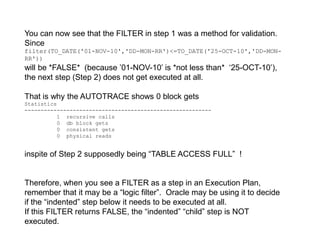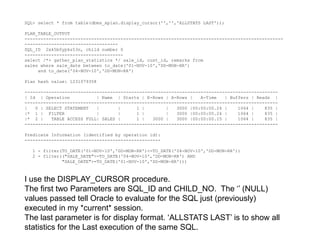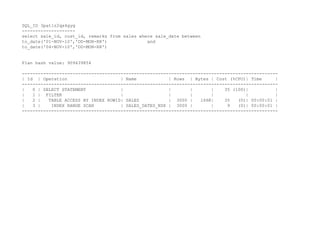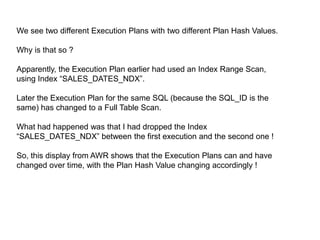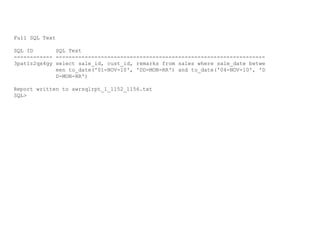1. The document discusses two methods for explaining SQL execution plans without executing the query: using the EXPLAIN PLAN statement and the GATHER_PLAN_STATISTICS hint.
2. It explains the components of an execution plan such as operation IDs, costs, and predicate information. Filter operations may validate logic before child operations execute.
3. Displaying execution plan statistics with DBMS_XPLAN after running a query with GATHER_PLAN_STATISTICS shows runtime metrics like number of rows and buffers accessed.

